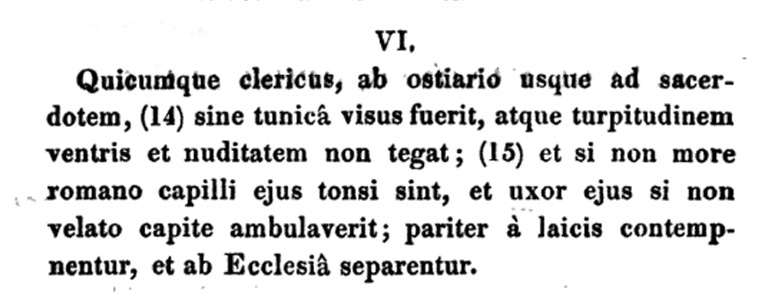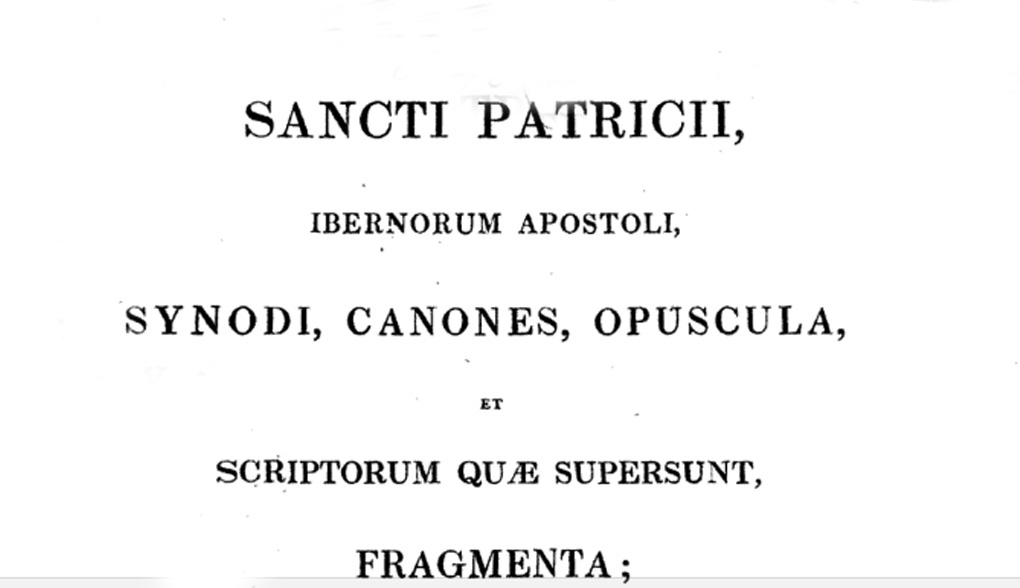A mid-nineteenth century discussion about the Reformation, the marriage of priests and the interregnum of Roman Catholic bishops of Kerry, revealed – indirectly – the genealogy of the Geraldines of Clanmaurice:1
John Florence Purdon Macarthy, who initiated the discussion, quoted from the fifth century doctrine of Saint Patrick:2
Any cleric, from the door keeper to the priest, who shall not go decently dressed or shall not be tonsured after the Roman fashion, or whose wife shall walk about with her head unveiled, let him be despised by the laity, and expelled from the Church.
.
Quicumque clericus, ab ostiario usque ad sacerdotem, (14) sine tunicá visus fuerit, atque turpitudinem ventris et nuditatem non tegat; (15) et si non more romano capilli ejus tonsi sint, et uxor ejus si non velato capite ambulaverit; pariter à laicis contempnentur, et ab Ecclesiâ separentur.

Macarthy argued that sixteenth century Bishop of Ardfert , James Fitzmaurice, the last bishop to occupy Ardfert Cathedral, adopted the Reformation and repudiated the ‘unscriptural discipline’ of the Church of Rome forbidding its clergy and bishops to use lawful marriage.
‘It is evident’ wrote Macarthy, ‘that the Bishop of Ardfert at the date of the Reformation married, that his sons were aiding the Queen of England against the insurrection … forming the connecting links between the Church of Ireland, reformed and unreformed’.3
The death of James Fitzmaurice, Bishop of Ardfert, was recorded in the annals of 1583:
The Bishop of Kerry died. namely, James, the son of Richard, son of John; and that bishop was a vessel full of wisdom. His origin was of the Clan Pierse – viz – the tribe of Raymond, the son of William, son of Gerald; and that William whom we have mentioned was brother of Maurice Fitzgerald, who came in the first invasion from the King of England into Ireland to aid Dermot Mac Morrogh, King of Leinster, and from him, William, are descended most of the Geraldines of Clanmaurice.4

The bishop was in good company. The year 1583 also saw the death of Gerald, the last Earl of Desmond.
_______________________________________
1 Discussion led by John Florence Purdon Macarthy, writing under the name of Kerriensis. For a list of Roman Catholic bishops from the sixth century to 1973, refer to St Mary's Cathedral, Killarney (1973) pp41-44. A list published in 1898 adds to the list the fifth century Bishop of Ardfert and Aghadoe, St Brendan, 484-577, born at Fenit, disciple of Jarleth of Tuam, said to have created the diocese of Ardfert (and Clonfert) after his spiritual father Ert, Bishop of Slane. 2 Sancti Patricii, Synodi, Canones, Opuscula (1835) or The Acts and Works of St Patrick edited by Doctor Joachimo Laurentio Villanueva contained 24 canons and definitions from the Synod held by St Patrick in the year 456. Macarthy quoted from number six. Villanueva also published, during a stay in Ireland, Ibernia Phoenicca (1831) which was translated by Henry O'Brien (1808-1835) author of The Round Towers of Ireland (1834). The Very Rev Dr Villanueva died on 26 March 1837 in his 84th year: 'This highly gifted Spaniard was an associate of the Royal Spanish Academy and one of the principal compilers of the celebrated dictionary by that learned body. He was President of the Cortes, and took a prominent part in framing the constitution of 1812. But having been obliged to abandon the land of his birth on account of his liberal political opinions during the government of the late monarch, he found an asylum with that hospitable and patriotic clergyman, the Rev Wm Yore, PP, of St Paul's, in whose house he enjoyed the comforts of a home during many years of his exile. We inform his friends that his remains will be removed from Arran-quay chapel on this day (Wednesday) for interment in the cemetery at Phibsborough' (Dublin Morning Register, 29 March 1837). 3 Discussion in Kerry Evening Post, February 18 1852 & March 10 1852. Kerriensis summed up, 'there is not an honest man among the Roman Catholics that does not know in his heart that all this cry about persecution means neither more or less than that they think the Pope ought to be allowed to do what he likes all over the world, and that the English nation will not let him'. 4 James Fitzmaurice was consecrated in 1536. A list of bishops published in 1898 dates his tenure 1555-1583 (Kerry Evening Post,1 June 1898). See collection series IE MOD/61 for further reference to the Reformation. A chart in this series (IE Mod/61/61.2) lists (alphabetically) historically relevant figures from Anne of Cleves to Sir Thomas Wyatt. Another (IE MOD/61/61.1) documents dates of religious historical significance from 400 (Vulgate) to 1950 (Feast of the Assumption).


